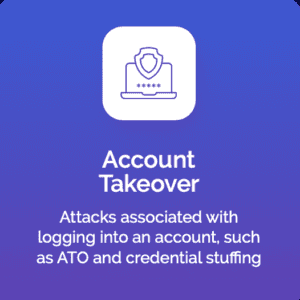What Are the Risks of Loyalty Fraud for Your Business?
The persistent threat of loyalty fraud looms large, posing substantial risks to businesses and customers alike. Did you know that 22% of merchants have encountered incidents of loyalty fraud, according to the MRC’s 2023 Global Payments and Fraud Report? Understanding the nuances of this type of fraud is crucial for implementing effective prevention strategies. From account takeovers to fake account creation, loyalty program fraud manifests in various forms, necessitating a comprehensive approach to safeguarding loyalty programs. Let's delve deeper into the world of loyalty fraud and explore the measures to protect your rewards program, ensuring it remains a valuable asset rather than a liability.
What Is Loyalty Fraud and How Does It Affect Your Business?
Loyalty fraud involves the illicit manipulation of loyalty programs for personal gain, encompassing activities such as account takeovers and fake account creation to illegally obtain rewards. Fraudsters target vulnerabilities in security measures to gain unauthorized access to customer accounts and sensitive information. This type of fraud can have devastating effects on customer relationships, financial losses for businesses, and erode trust in loyalty programs. Implementing robust security measures is crucial to combat this growing threat.
How Does Loyalty Fraud Impact Different Industries?
Loyalty fraud significantly affects various industries and the repercussions extend beyond financial losses, eroding brand reputation and customer loyalty. Industries such as retail, hospitality, and financial services face heightened risks due to the vast customer data stored within loyalty programs. The fallout from loyalty fraud spreads wide, necessitating robust security measures to combat evolving threats and safeguard customer relationships. Fraudulent activities disrupt operations, tarnishing the integrity of loyalty programs and straining resources for affected businesses.
What Are the Common Methods Used in Loyalty Fraud?
Account takeover attacks (ATOs) and fake account creation are prevalent pathways to loyalty fraud.
An ATO involves cybercriminals gaining unauthorized access to a legitimate user’s account, often through stolen credentials obtained via phishing, data breaches, or other means.
Fake account creation, on the other hand, entices bonus abuse by creating fraudulent accounts. Both schemes exploit loopholes in loyalty program security, posing significant risks to customer data and program credibility.
How Do Account Takeover Attacks Compromise Loyalty Programs?
Account takeover attacks involve hackers gaining unauthorized access to loyalty accounts and have a significant impact on loyalty programs. Once fraudsters gain access to an account, they can redeem loyalty points or rewards for cash, goods, or services, leading to point theft. Additionally, they may use personal information for other fraudulent activities, further compromising the victim's security through identity theft. This often results in reputation damage, as victims of ATOs may lose trust in the loyalty program, tarnishing the brand's reputation.

How Does Fake Account Creation Lead to Bonus Abuse?
Similarly, fake account creation also poses a threat to loyalty programs. Fraudsters exploit promotions or sign-up bonuses to accumulate points quickly across multiple fake accounts, a practice known as point accumulation. These points are then redeemed for rewards, which are often resold for profit, constituting redemption fraud. Furthermore, fake accounts can exploit program weaknesses, such as referral bonuses, to generate illicit gains, leading to program abuse.

Spotlight on the Airline Industry
The airline industry is particularly vulnerable to loyalty points theft; free flights, upgrades and lounge access are attractive targets for fraudsters, highlighting the need for airlines to stay vigilant against account takeover attacks and fake account creation to protect their loyalty programs and maintain customer trust.
Why Are Airlines Prime Targets for Loyalty Fraud?
Airlines are prime targets for loyalty fraud due to the high value of miles and rewards points. The travel industry's global nature makes it easier for fraudsters to operate across borders and exploit vulnerabilities. Moreover, the vast number of customer accounts and transactions in airline loyalty programs present significant challenges for detection and prevention. The allure of free flights and upgrades motivates cybercriminals to target these programs aggressively. The anonymity of online transactions also makes it harder to trace fraudulent activities back to the perpetrators.
What Are Notable Cases of Loyalty Fraud in the Airline Industry?
In one notorious case, cybercriminals exploited the weak authentication protocols of an airline's loyalty program, gaining unauthorized access to multiple high-value accounts. The fraudster siphoned off miles worth thousands of dollars, exchanging them for merchandise and gift cards. This incident not only tarnished the airline's reputation but also led to financial losses and eroded customer trust. Such cases underscore the critical need for robust security measures in loyalty programs to combat ever-evolving fraud tactics.
How Can You Detect Loyalty Fraud in Your Rewards Program?
- Monitor Unusual Redemption Patterns: Look for sudden spikes in point redemptions or transfers to new accounts.
- Track Anomalous Login Locations: Pay attention to logins from unexpected or inconsistent locations.
- Identify Multiple Failed Login Attempts: Be aware that this may signal unauthorized access attempts.
- Watch for a Surge in New Accounts: Keep an eye on multiple accounts from the same IP address, which could indicate fake account creation.
- Use Data Analytics: Analyze patterns and anomalies to pinpoint suspicious activities in real-time.
How Can Data Analytics Help Detect Loyalty Fraud?
- Identify Fraudulent Patterns: Use advanced algorithms and machine learning to recognize patterns indicative of fraud.
- Analyze Large Data Sets: Examine vast amounts of customer data to spot anomalies and suspicious behavior.
- Enable Real-Time Monitoring: Quickly detect and respond to potential fraud attempts as they happen.
- Proactively Safeguard Programs: Leverage data analytics to take a proactive approach in protecting the integrity of loyalty programs and maintaining customer trust.
How Can Bot Mitigation Prevent Loyalty Fraud?
Transitioning from detection to prevention, the role of bot detection and mitigation becomes increasingly important in cutting off loyalty fraud at the pass.
Implementing advanced bot mitigation tools is crucial in safeguarding loyalty programs. These solutions utilize advanced algorithms to identify and block automated bot attacks that aim to exploit vulnerabilities in rewards systems. By analyzing user behaviors and patterns, bot detection can efficiently distinguish between legitimate users and fraudulent bots, helping prevent unauthorized access, fake account creations and bonus abuses. Adopting bot mitigation measures enhances the security of loyalty programs and protects customer accounts from fraudulent activities.
How Do Bot Detection Solutions Work?
- Analyze User Behavior: These solutions examine user interactions to identify patterns that indicate bot activity.
- Stop Suspicious Activities in Real Time: Bots are detected and stopped as soon as suspicious behavior is identified, preventing unauthorized access.
- Provide Insights and Analytics: Businesses receive detailed insights to monitor and understand fraudulent activities on their platforms.
- Enhance Security: Implementing these solutions significantly reduces the risk of loyalty points theft by improving the overall security of the rewards program.
What Are Some Successful Cases of Bot Mitigation?
Several businesses have successfully implemented bot mitigation strategies to safeguard their rewards programs from loyalty fraud. One such case study is that of a major travel booking site that faced persistent threats from cybercriminals using bots to perform credential stuffing at scale, compromising user accounts to steal accrued loyalty points. By implementing Arkose Bot Manager, the company successfully curtailed nearly all account takeover (ATO) attacks without disrupting the login process for legitimate users. This intervention not only enhanced the overall customer experience by maintaining seamless access but also significantly improved operational efficiencies. The results were immediate, with attacks stopped almost instantaneously and no negative impact on good user login flow..
What Are the Best Practices for Safeguarding Your Rewards Program?
Implementing the best practices for safeguarding your rewards program is crucial to protect your business from loyalty fraud. Strong authentication measures, such as unique passwords and multi-factor authentication, are essential to prevent unauthorized access to customer accounts. Regularly monitoring and updating security protocols can help identify and address vulnerabilities before they can be exploited by fraudsters. And bot detection can
By following these best practices, you can enhance the security of your rewards program and protect your customers' data from loyalty fraud.
Implementing Strong Authentication Measures
- Use Multi-Factor Authentication (MFA): Require multiple forms of verification, such as a password and a code sent to a registered email or phone.
- Encourage Strong Passwords: Advise customers to choose complex, unique passwords and update them regularly.
- Add Extra Layers of Security: Utilize additional authentication methods like biometrics or security tokens to further protect accounts.
- Reduce Unauthorized Access: These measures make it significantly harder for fraudsters to gain access to customer accounts, thereby safeguarding against loyalty fraud.
Regularly Monitoring and Updating Security Protocols
- Continuously Review Security Measures: Regularly assess and update your security protocols to address emerging threats.
- Identify and Address Vulnerabilities: Proactively find and fix any weaknesses in your security systems.
- Implement New Security Protocols: Adapt to new threats by integrating advanced security measures as needed.
- Monitor Customer Accounts: Regularly check account activity to detect suspicious behavior.
- Create a Dedicated Fraud Team: Establish a team focused on fraud detection and prevention to enhance overall security.
Using Bot Detection and Mitigation
- Identify and Block Malicious Bots: Utilize advanced tools like Arkose Bot Manager to distinguish between legitimate users and automated bots.
- Analyze Multiple Signals: Implement solutions that analyze hundreds of signals and real-time data to detect bot activity.
- Prevent Credential Stuffing and Fake Accounts: Stop bots from performing credential stuffing attacks and creating fake accounts within your rewards system.
- Safeguard Customer Trust: By integrating bot detection, businesses can protect their loyalty programs, maintain customer trust, and secure valuable rewards.
Engaging Your Audience While Ensuring Security
Engaging your audience while ensuring security is crucial for the success of your rewards program. While implementing strong security measures is important to protect your business and customers, it is equally important to provide a seamless and enjoyable user experience. By striking the right balance between security and user experience, you can build strong customer relationships and foster loyalty. This can be achieved by implementing user-friendly security measures, such as easy-to-use authentication methods, modern bot detection solutions, and clear communication about the security measures in place. By prioritizing both security and user experience, you can create a positive and trustworthy environment for your customers.
How Can You Balance User Experience with Loyalty Fraud Prevention?
To balance user experience with loyalty fraud prevention:
- Use User-Friendly Authentication: Implement methods like biometric authentication or one-click logins to maintain security without frustrating users.
- Leverage Advanced Bot Detection: Apply solutions that effectively block fraud without impacting legitimate users.
- Offer Secure Payment Options: Provide tokenized payments or digital wallets to enhance security while ensuring convenience.
- Prioritize Customer Convenience: Ensure that security measures do not disrupt the user experience, building trust and loyalty while effectively preventing fraud.
Why Is It Important to Educate Customers About Loyalty Fraud Risks?
- Raise Awareness: Help customers understand the risks associated with sharing personal information and the significance of strong authentication.
- Empower Customers: Provide clear information about security measures and teach customers how to protect their accounts, such as using unique passwords and recognizing phishing attempts.
- Create a Vigilant User Base: An informed customer base is more likely to monitor their accounts for suspicious activities, contributing to the overall security of your rewards program.
How Arkose Labs' Loyalty Fraud Detection & Mitigation Tool Protects Your Program
Arkose Labs offers a comprehensive solution to defend your loyalty programs against fraud. Arkose Bot Manager detects and mitigates fraudulent activities in real time, leveraging advanced technologies like AI-resistant challenges and behavioral analytics. By analyzing over 125 signals, it differentiates between legitimate users and fraudsters, ensuring that your rewards program remains secure and trustworthy. This proactive approach helps protect customer data and maintain the integrity of your loyalty programs.
CTA: Book a demo with Arkose Labs to learn how you can protect your loyalty programs from fraud.

